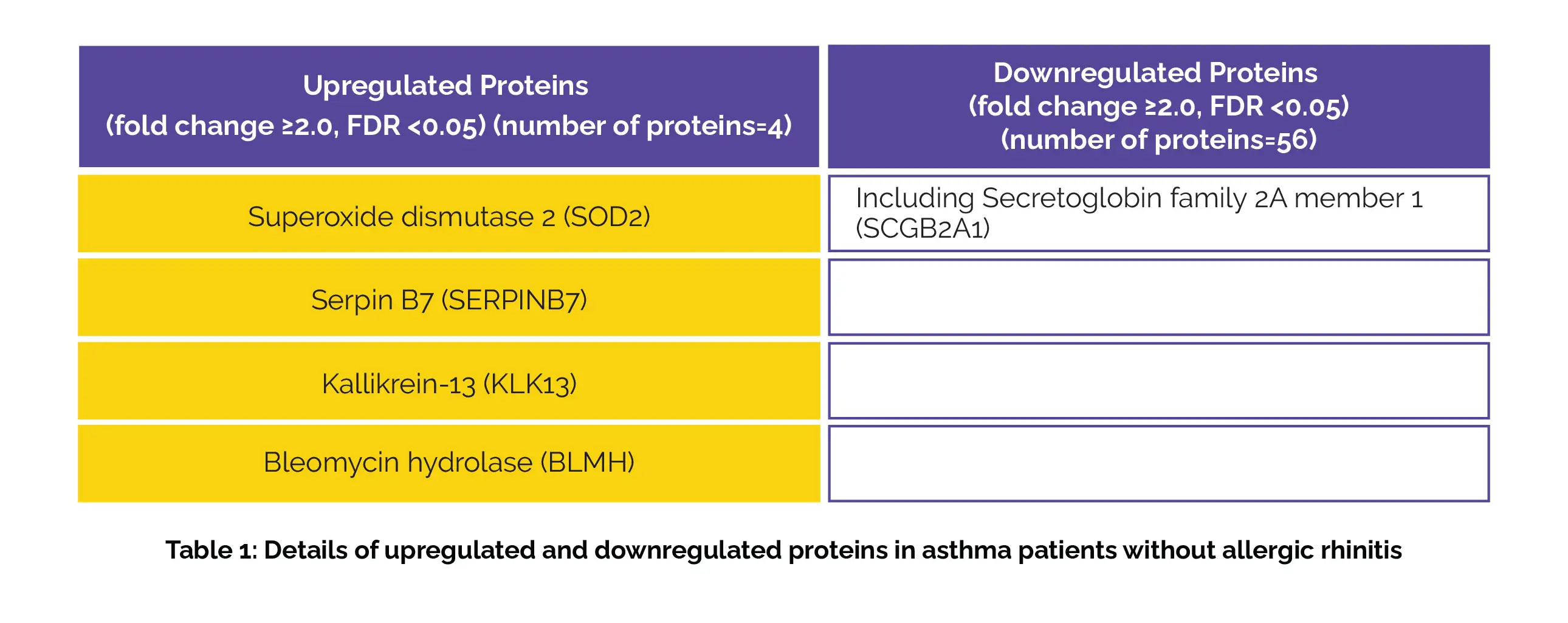Categories
Change Password!
Reset Password!


Given the lack of research on the proteomic profile of nasal lavage fluid in those with asthma, this study explored if differentially expressed proteins (DEPs) in nasal lavage fluid can serve as biomarkers to distinguish asthma patients from healthy individuals.
Changes in the nasal lavage proteome of asthma patients without allergic rhinitis suggest a link between upper airway proteomics and asthma control, underlining peptidase inhibitor 3 (PI3) as a pivotal regulator.
Given the lack of research on the proteomic profile of nasal lavage fluid in those with asthma, this study explored if differentially expressed proteins (DEPs) in nasal lavage fluid can serve as biomarkers to distinguish asthma patients from healthy individuals. It also aimed to distinguish between individuals with well- and poorly-controlled asthma.
Demographic and medical history data were recorded for the included patients with allergic rhinitis, asthma, or both, as well as healthy individuals. They completed the asthma quality of life and asthma control questionnaires. To assess the protein levels, the nasal fluid samples were gathered and subjected to proteomic analysis via the data-independent acquisition (DIA) methodology.
The study enrolled 24 asthma patients, 27 with asthma + allergic rhinitis, 25 with only allergic rhinitis, and 12 healthy individuals. After the proteomic analysis, 4 proteins were considerably upregulated in nasal lavage fluid of asthma patients not presenting with allergic rhinitis compared to the healthy individuals. Conversely, 56 proteins were suggestively downregulated (fold change ≥2.0, FDR <0.05), details mentioned in Table 1:

Moreover, 96.49% of DEPs, such as peptidase inhibitor 3 (PI3) and C-X-C motif chemokine 17 (CXCL17), were upregulated in poorly controlled asthma patients without allergic rhinitis compared to those with well- or partly controlled asthma (fold change ≥1.5, FDR <0.05). PI3, with 18 connections, may play a crucial role in the management of asthma as per the analysis using the Search Tool for the Retrieval of Interacting Genes/Proteins (STRING).
This analysis focus on the important alterations in the nasal lavage proteome of asthma patients without allergic rhinitis. Furthermore, the outcomes imply a potential connection between upper airway proteomic expression and asthma control status.
Journal of Asthma and Allergy
Nasal Lavage Fluid Proteomics Reveals Potential Biomarkers of Asthma Associated with Disease Control
Meiping Chen et al.
Comments (0)